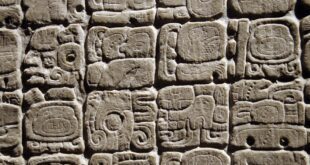Unveiling the Fascinating Tapestry of Human Evolution
Unleashing Our Ancestral Roots
Delving into the riveting realm of human evolution allows us to explore our origins and understand the marvelous tapestry of life. Biological anthropology is an illuminating lens through which we can unveil the captivating journey our species has undertaken over millions of years of existence.
The Emergence of Homo Sapiens
Homo sapiens, the scientific name for our modern human species, appeared on the stage of evolution approximately 300,000 years ago. As descendants of past hominid species, we gradually developed sophisticated tools, cultural traditions, and language, propelling our species towards domination over the Earth.
Studying the rise of Homo sapiens embeds us in a story of success, highlighting the unique traits that allowed us to thrive in diverse habitats across the globe. Blessings such as our ingenuity, adaptability, and neotenous features (that charming baby-faced trait reflecting lesser skull development) stimulated strides in intellectual, social, and physical capacities, forever molding our journey.
The Evolutionary Landscape of Bipedalism
Enchantingly, one undeniable characteristic that distinguishes us humans is our ability to walk upright on two legs – bipedalism. This pivotal transformation embarked upon by our ancestors opened doors to diverse adaptations and eventually led to significant changes in our skeletal structure, enabling us to traverse vast landscapes with ease and grace.
The acquisition of bipedal locomotion, accompanied by adaptations such as expanded brain size and opposable thumbs, was nothing short of revolutionary in our evolutionary history. Be it strolling across savannas, hiking through dense jungles, or dancing under the moonlit sky, our ability to walk upright empowers us to thrive in a myriad of habitats.
The Wondrous Discovery of Genetics
Peering through the microscopic lens, we stumble upon the awe-inspiring realm of genetics. Unraveling our DNA further elucidates our shared ancestry with other organisms, allowing us to comprehend humanity’s grand connection to all living beings.
Through genetic research, biological anthropologists uncover the intricate genetic variations that make everyone unique. By examining the inherited traits that shape us, we witness the subtle but consequential changes that occurred during our evolution, driving our species towards present-day magnificent diversity.
Cultural Evolution and the Human Story
Beyond anatomical changes, cultural evolution plays an integral role in shaping the human narrative. In the vast tapestry of human societies, language, art, rituals, and technological innovations become the colorful threads that weave our intricate cultural landscape.
From the first cave paintings to the advent of space exploration, our cultural diversity allows us to connect across time and build upon the achievements of our ancestors. It is through cultural evolution that we satisfy our primal curiosity, ignite imagination, and promote understanding, erecting a bridge that transcends the constraints of time and space.
Appreciating the Human Legacy
As we immerse ourselves in the realm of biological anthropology, an intricate tale full of triumphs and mysteries unveils before us. It is captivating and delightful to reimagine our ancestors, their trials, their triumphs, and our shared heritage. Through their struggles, we have emerged as Homo sapiens, separated by an infinite thread from the rest of the natural world.
Every aspect of human evolution gives us reason to cherish our existence, to embrace our connections with the world around us with increased wonder, and together pave our way into the future with uplifted spirits.
 Mind Uncharted Explore. Discover. Learn.
Mind Uncharted Explore. Discover. Learn.



